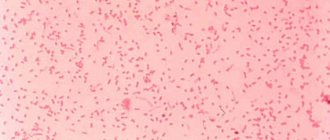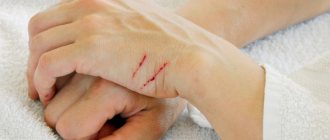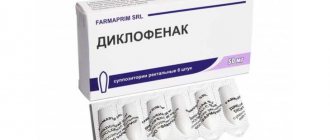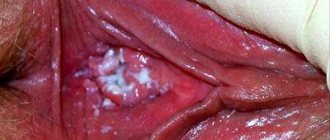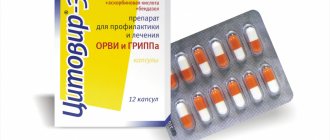Pharmacological properties of the drug Difluzol
fluconazole (2-(2,4-difluorophenyl)-1,3-bis(1H-1,2,4-triazol-1-yl)-2-propanol) is an antifungal agent for systemic use, a triazole derivative. Fluconazole is a powerful selective inhibitor of sterol synthesis in fungal cells. The drug is active against mycoses caused by Candida spp. , Cryptococcus neoformans, Microsporum spp., Trichoptyton spp., Blastomyces dermatitides, Coccidioides immitis, Histoplasma capsulatum . After oral administration, fluconazole is well absorbed. Concomitant food intake does not affect the absorption of the drug. Plasma concentrations reach maximum 0.5–1.5 hours after administration on an empty stomach. 11–12% of fluconazole is bound to plasma proteins. The half-life is about 30 hours. Bioavailability after oral administration exceeds 90%. Fluconazole penetrates well into all biological fluids of the body. In the stratum corneum, epidermis, dermis and secretions of the sweat glands, concentrations exceeding serum levels are achieved; Fluconazole accumulates in the stratum corneum of the skin and is detected in the nails 6 months after completion of therapy. Detected in breast milk in the same concentrations as in blood. Excreted mainly by the kidneys; about 80% of the administered dose is excreted unchanged in the urine. Drug clearance is directly proportional to creatinine clearance.
Side effects
The instructions for Difluzol indicate that the drug can cause side effects from certain body systems, namely:
- Headache, insomnia, vertigo, dizziness, tremor, drowsiness, convulsions, paresthesia and taste disturbance (nervous system);
- Abdominal pain, indigestion, diarrhea, dry mouth, flatulence, nausea, dyspepsia and vomiting (digestive system);
- Leukopenia, thrombocytopenia and agranulocytosis (blood and lymphatic system);
- Angioedema, urticaria, skin itching and facial swelling (immune system);
- Hypercholesterolemia, hypokalemia and hypertriglyceridemia (metabolism);
- Toxic liver damage, increased levels of liver enzymes and bilirubin, hepatitis, liver failure, cholestasis, hepatocellular damage and jaundice (hepatobiliary system);
- Alopecia, excessive sweating, acute generalized exanthematous pustulosis, exfoliative dermatitis and rash (skin and subcutaneous tissue).
Difluzol can cause fever, weakness, myalgia and asthenia, as well as side effects from the cardiovascular system, namely:
- Paroxysmal ventricular tachycardia of the “pirouette” type;
- Prolongation of the QT interval.
Symptoms of a drug overdose include paranoid behavior and hallucinations. In such cases, gastric lavage and forced diuresis are required.
Indications for use of the drug Difluzol
Fungal infections: cryptococcosis, including cryptococcal meningitis; systemic candidiasis, including candidemia, disseminated candidiasis and other forms of invasive candidal infection (infection of the peritoneum, endocardium, eyes, respiratory and urinary tract); candidiasis of the mucous membrane (oral cavity, pharynx, esophagus, non-invasive bronchopulmonary candidiasis, candiduria, atrophic candidiasis of the oral cavity caused by wearing dentures); genital candidiasis (acute and chronic recurrent vaginal candidiasis, balanitis); mycosis of the skin, including mycosis of the skin of the feet, torso, and groin area; pityriasis versicolor; onychomycosis; deep endemic mycosis; prevention of fungal infections in patients with malignant neoplasms during treatment with cytostatics and radiation therapy, as well as in other conditions caused by immunosuppression.
Pharmacological action of Difluzol
Based on their chemical composition, Difluzol tablets can be classified as triazole compounds that inhibit the biosynthesis of sterols, without which the formation of fungal cell membranes is impossible. Difluzol is active against Microsporum spp., Crypticoccus neoformans, Blastomyces dermatitidis, Trichophyton spp., Histoplasmacapsulatum, Candida spp, as well as Coccidioides immitis. Fluconazole is absorbed in the digestive tract regardless of food intake, and its bioavailability is about 90%.
After absorption in the intestine, fluconazole penetrates into almost all environments and tissues of the body, including cerebrospinal fluid, sputum, saliva, and sweat fluid. In the cerebrospinal fluid, the concentration of Difluzol is about 80% of the concentration in plasma. The drug is excreted unchanged by the kidneys. The duration of the elimination period is quite long (up to 30 hours), and therefore, according to reviews, taking Difluzol more than one capsule per day is not advisable.
Use of the drug Difluzol
Orally, the daily dose of Difluzol depends on the nature and severity of the fungal infection and is determined individually. Adults: for vaginal candidiasis - 0.15 g 1 time per day; for candidiasis of the mucous membrane - 0.05–0.1 g 1 time per day for 14–30 days; for mycosis of the skin, the recommended dose is 150–200 mg once a week or 50 mg once a day. The duration of therapy is usually 2–4 weeks, however, with mycosis of the feet, longer therapy (up to 6 weeks) may be required. For pityriasis versicolor, the recommended dose is 50 mg once a day for 2–4 weeks; for cryptococcal infections, 400 mg is usually prescribed on day 1, and then treatment is continued at a dose of 200–400 mg once a day. Duration of treatment is 6–8 weeks. Long-term treatment at a dose of 200 mg is indicated for the prevention of relapse of cryptococcal meningitis in patients with AIDS after they have completed the full course of primary treatment; for the prevention of fungal infections in patients with reduced immunity - 50 mg 1 time per day, while the patient is at risk; for onychomycosis - 150–200 mg once a week, treatment should be continued until the affected nail is completely replaced with a healthy one. Children: over the age of 1 year without impaired renal function, the drug is prescribed daily once a day at the rate of 1–3 mg per 1 kg of body weight for mucosal candidiasis and 3–12 mg/kg per day for systemic candidiasis and cryptococcosis, depending on the severity of the disease. For children with impaired renal function, the daily dose of the drug should be reduced (in the same proportion as for adults) in accordance with the severity of renal failure. Elderly patients in the absence of signs of renal failure are prescribed the drug at the usual dose. In patients with impaired renal function, the initial dose is 50–400 mg, then the daily dose (depending on the indication) is determined according to the table:
Creatinine clearance, ml/min | Recommended dose, % |
| 50 | 100 |
| 11–50 | 50 |
| Patients on regular dialysis | One dose after each dialysis |
Release form and composition
Difluzol is available in the form of gelatin capsules with a dosage of 50 and 150 mg. 50 mg capsules have a white body and a yellow cap, 150 mg capsules have a yellow body and a yellow cap.
The contents of the capsules are white or white with a yellowish tint granular powder. The presence of conglomerates is also allowed; when pressed with a glass rod, a powder is formed.
Capsules are packaged in contour cellular blisters made of polyvinyl chloride film and aluminum foil. One blister contains 1 or 7 capsules. One contour package and instructions for use of the drug are placed in a cardboard box.
The active ingredient in Difluzol is fluconazole. Auxiliary components of capsules: potato starch, povidone, lactose, croscarmellose sodium, talc, magnesium stearate, titanium dioxide, gelatin and dyes (E104 and E110).
Interactions of the drug Difluzol
Difluzol enhances the effect of anticoagulants, oral hypoglycemic agents, diphenin, hydrochlorothiazide. When combined with rifampicin, the half-life of Difluzol is reduced, so a slight increase in its dose is necessary. When used with cyclosporine and cidovudine, their concentration in the blood may increase. Simultaneous administration of Difluzol with food, cimetidine, or antacids does not affect its absorption. It should be noted that interactions with other drugs have not been specifically studied, but they are possible.
special instructions
Treatment with Difluzol should be continued until stable clinical and hematological remission occurs, since premature cessation of therapy is fraught with relapses.
Toxic changes in the liver (including death) are rare and, as a rule, occur in patients with serious concomitant diseases. Hepatotoxic effects are not associated with the size of the daily dose, duration of therapy, gender and age of the patient. Signs of toxic liver damage are reversible and usually disappear after discontinuation of the drug.
Before using Difluzol, you should consult your doctor, since fluconazole interacts with many medications, which should be taken into account when prescribed simultaneously with other drugs.
Reviews on the use of Difluzol: does it help?
On many specialized medical and women's forums you can find a lot of opinions, reviews, positive and negative, about the effectiveness of the drug Diflusol itself in the fight against thrush. But as doctors and most patients note, the presented drug has proven itself exclusively on the positive side.
As noted by many women, as well as men who are prescribed a drug for the treatment of thrush, a single dose of a tablet is enough to combat thrush. A positive characteristic of this drug is its ease of use in treatment, as well as in the prevention of unwanted fungal infections.
From an objective point of view, it is worth assessing the positive therapeutic effect, starting first of all from the cause of the appearance of thrush - here it is important to know how the fungal infection occurred. It is also important to take into account the correct selection of dosage and frequency of administration of the drug.
According to statistics, the drug gives a positive treatment result in 80%. But in all other respects, it does not provide positive dynamics of treatment. In this case, the course of treatment with Difluzol itself should be supplemented with additional drugs - vaginal suppositories with an antifungal composition. A third of patients in gynecological offices note that the presented drug helps when thrush recedes. But after a short period of time, under a combination of unfavorable circumstances, it makes itself felt.
Difluzol in the fight against thrush is a very popular and effective remedy, but despite its effectiveness, it is not always possible to obtain a positive treatment result.
Why thrush occurs and how to deal with it, watch the video:
Patient reviews
Alena, 23 years old : “I had thrush. I tried douching with chamomile and calendula, but nothing helped. Then I bought Difluzol and immediately drank 1 capsule. In the morning there were no symptoms, but a small rash appeared on the oral mucosa. A few days later it went away.”
Yana, 27 years old : “The capsules helped me very well for my genital infection, although I had been treated for a long time. There were no adverse reactions. But Difluzol didn’t work for my friend; she was constantly sick.”
Instructions for use
The daily dosage of the drug depends on the degree of damage and concomitant pathological disorders in the functioning of internal organs and systems. The doctor determines it individually, based on the results of laboratory tests.
For mild cases of the disease, the instructions for using Difluzol suggest a one-time dose of the drug. Treatment of fungal infections involves taking the drug - a single dose of 400 mg, then 200 mg each for 2 to 4 weeks. To treat candidiasis affecting the vaginal mucosa, it is enough to take a single dose of 150 mg of the drug orally. If candidiasis affects children, the drug dosage is calculated based on the scheme of 6-12 mg of the active substance fluconazole per kilogram of weight.
Difluzol analogs (substitutes)
Level 4 ATC code matches:
Medoflucon
Vfend
Itracon
Mikosist
Irunin
Mikomax
Orungal
Mycoflucan
Fluconazole
Sporagal
Orungamin
Flucostat
Rumicosis
Futsis
Vero-Fluconazole
Kandizol
Kanditral
Itraconazole
Diflazon
Structural analogs: Mikosist , Flucostat, Diflucan , Flucozan, Flucoside, Maiconil, Diflazon, Medoflucon, Nofung, Mikomax , Mikoflucan , Fluconazole , Fungolon , Tsiskan , Flucomicide, Flukoral, Fluconorm, Flucorem, Forkan, Fucis, Fluzak.
